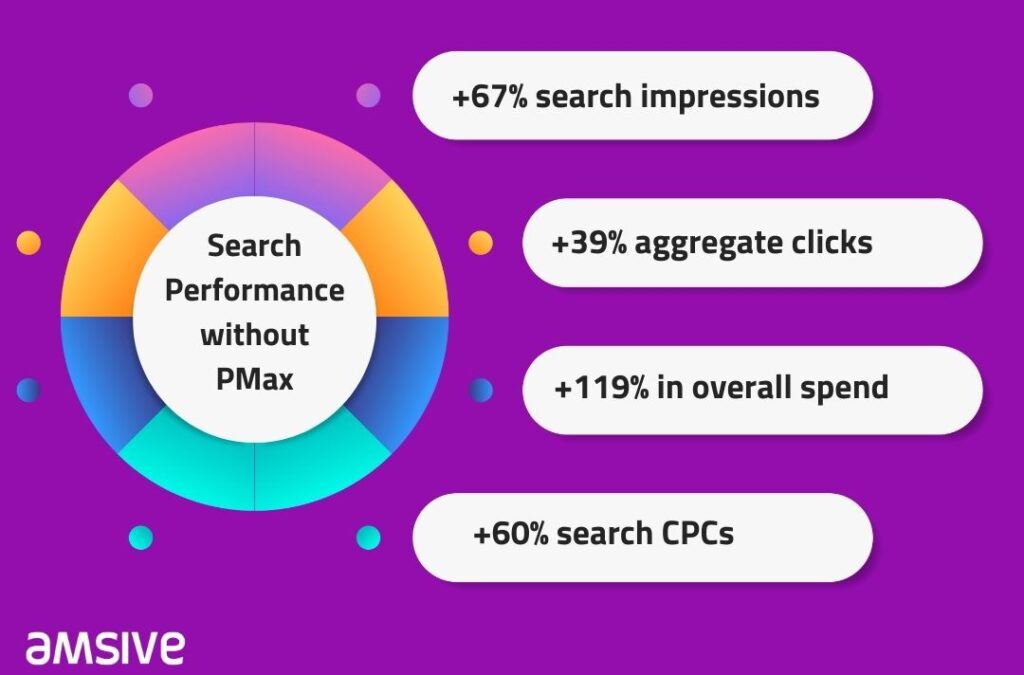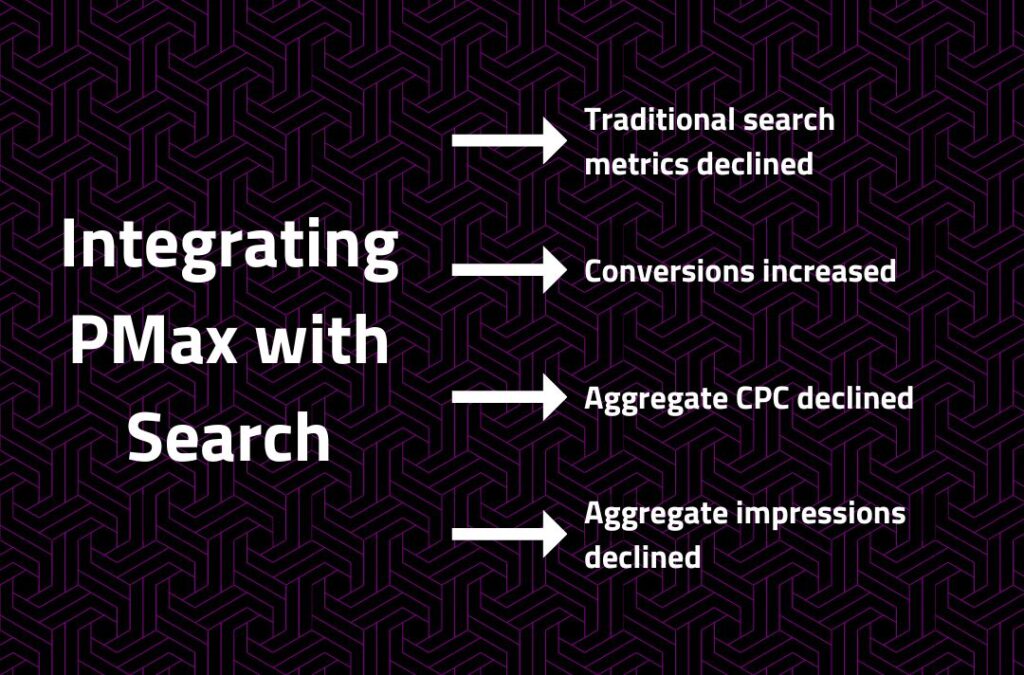With the increase in display and video becoming part of the paid search landscape, advertisers can find it increasingly difficult to accurately attribute data. This challenge can be further amplified with products like Performance Max, a Google platform that pushes ads across all Google properties. While it limits brand control, it can increase overall brand visibility. However, the jury is still out on whether Performance Max actively competes with traditional search efforts.
Navigating the competitive terrain for engagement is already a complex endeavor, but an additional layer of intricacy arises when advertisers grapple with the potential competition against their own marketing initiatives. Jon Kagan, our director of Search and Media Strategy, took a deep dive into the real-time impacts of Performance Max on traditional search campaigns for Search Engine Journal.
Jump To:
What Is Performance Max?
First introduced back in November of 2021, Google’s Performance Max is a goal-based campaign type that enables performance advertisers to access their Google Ads inventory from a single campaign. Performance Max (PMax) offers comprehensive reach, optimized performance, transparent, automated steering, and customizable goals. This campaign type also purports not to interfere with traditional paid search efforts.
Advertisers give PMax a budget and a goal (such as eCommerce orders or store visits). It will then use those two things, along with a week of algorithmic learning and optimization, to selectively place ads across Google, including Display, Email, Maps, Shopping, and Search.
Competition with Traditional Search
Vying for impressions with your competitors can be tricky enough, but advertisers shouldn’t have to worry about competing for space against their own marketing initiatives. Despite the claims that PMax doesn’t have any impact on traditional paid search, there is an evident shift in click volume when PMax is on and when it’s off.
We helped a brand run concurrent campaigns with phrase match, exact match, and PMax, the performance was fairly mixed. Each of the campaign types ran different bid strategies, with the PMax campaign focused on a target return on ad spend. The other two campaigns were set to optimize bids based on target return on ad spend, and on max conversion value, respectively.
With PMax and search running in tandem, most impressions came from PMax, while most clicks came from search. Of the 99 conversions achieved during the seven days prior to turning off Performance Max, roughly 2/3rds of them came from the traditional search side.
When PMax was turned off and that spend reallocated to the traditional paid search campaigns, search impressions increased by 67%, while overall clicks increased by 39%. Spend and CPCs also went through the roof without PMax enabled.

With PMax reactivated, overall branded search metrics saw a decline, showing a drop in impressions, clicks, and spend. With PMax thrown back in the mix, aggregate metrics improved—CPCs declined, impressions and clicks rose, and conversions increased by an astounding 91%.
The Benefits of Running PMax and Search Together
Despite Jon’s initial skepticism, it appears that running PMax alongside traditional search campaigns can lead to holistic benefits. This includes better overall search performance, indicated by lower aggregate CPC and increased total conversions.

These results also suggest that despite the platform’s claims, PMax does impact traditional search campaigns. That said, the combined use of both can lead to improved overall performance. Are you considering testing Performance Max for yourself? Delve more deeply into Performance Max with the insights that we’ve shared in Search Engine Journal, or let’s talk about achieving more for your marketing — and your business.






